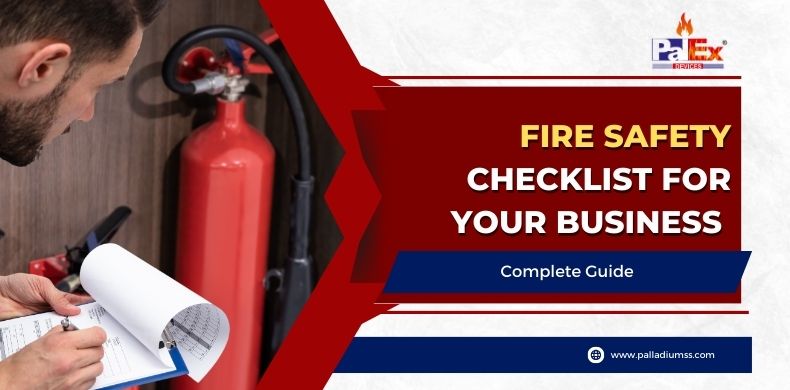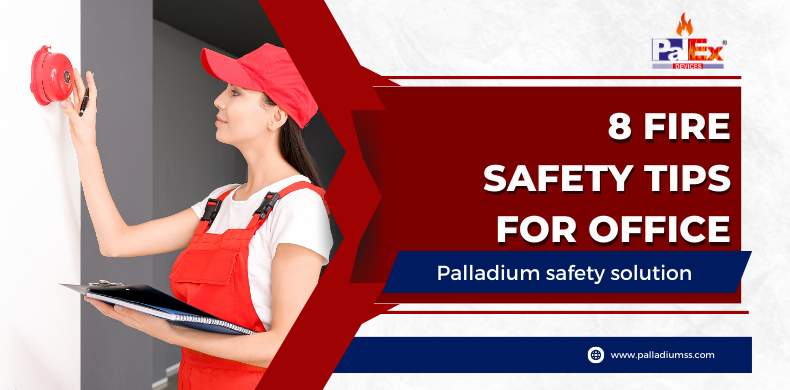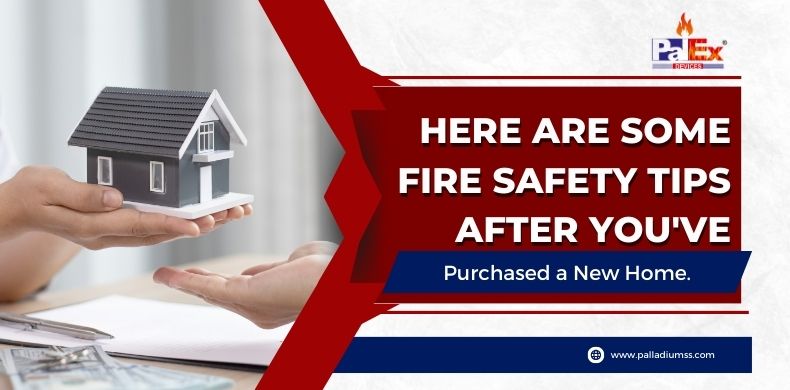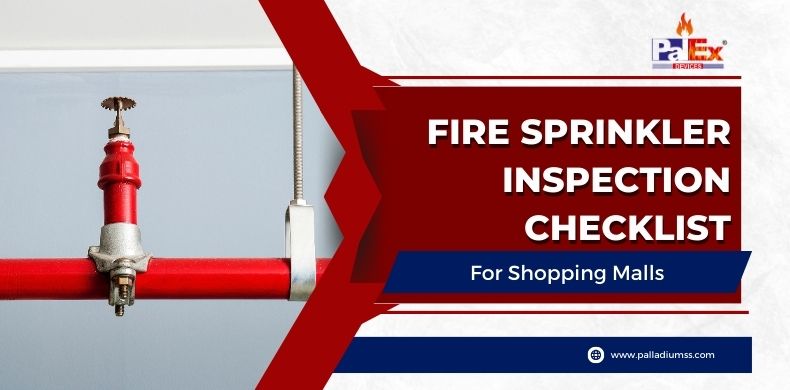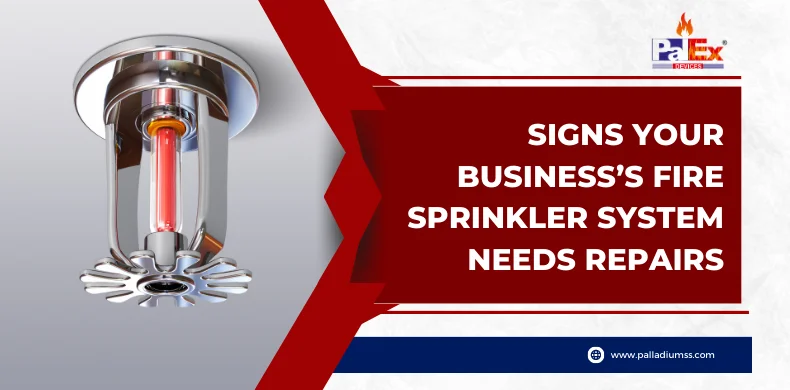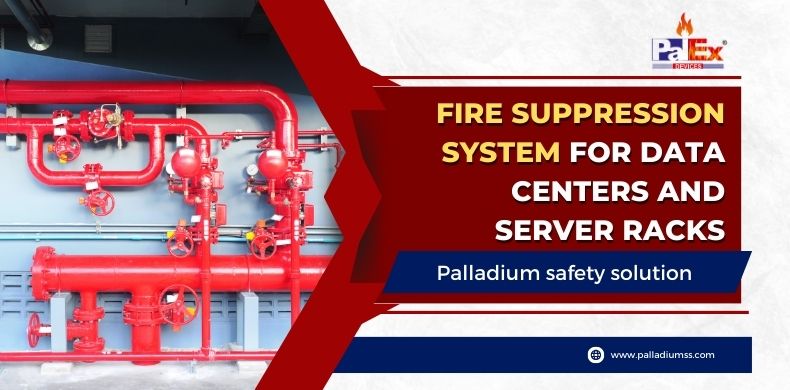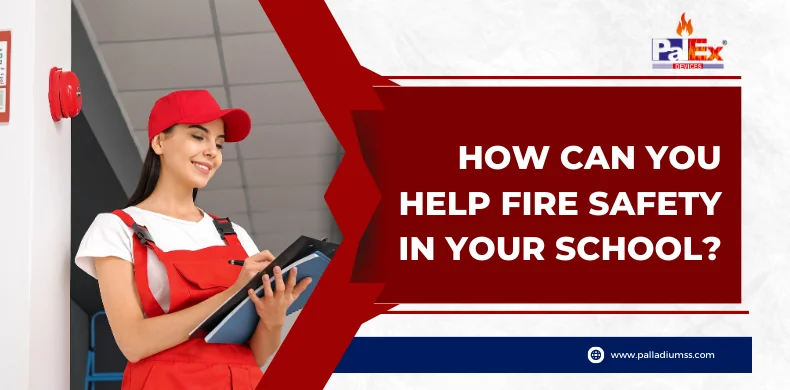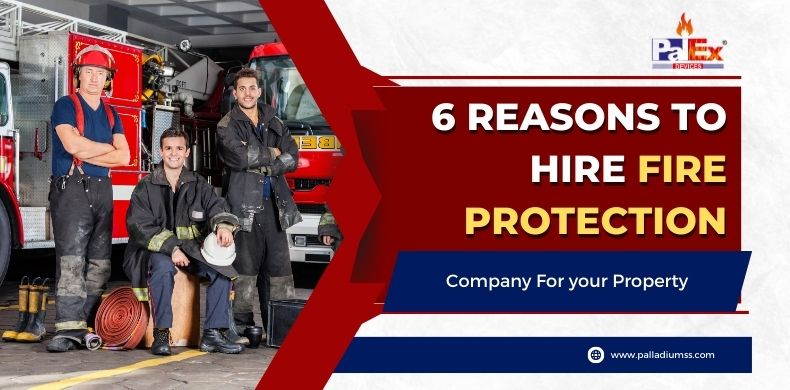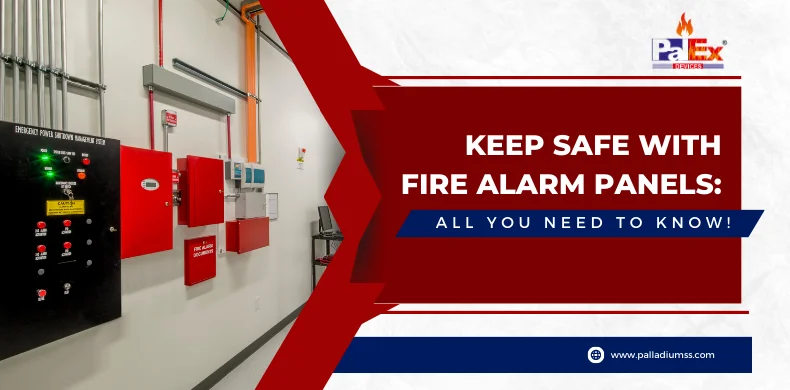To create a detailed and proper plan, you must show the following things.
- A safe meeting point for staff to meet that should be far away from the building.
- Proper maintenance of emergency doors so that they can be open easily.
- Clearly marked escape routes that provide the quickest and most direct exit from the building.
- There should be a number of emergency-exists according to people gathering strength in the building. So that everyone can easily exit from the building without any panic.
- There would not be any blockage in the exit path.
- If the fire is due to electrical short-circuiting then it is necessary to switch off emergency lights.
- It is crucial to check frequently that all the fire detection and warning system are fully functioning or not.
- Appropriate fire safety equipment is properly installed from the best manufacturers to ensure safety.
- All staff should be trained to deal in such a panic situation. They should know the proper use of fire equipment.
- Installation of fire extinguishers and fire alarm systems can also help to be safe from fire.
- Palladium Zone 4 detection system can help to alert so that a proper plan can be executed.
Also read :Common Electrical Panel Problems and How to Solve Them
Installation of Fire Exit and Fire Doors
A fire-safe building always has a large number of emergency exit to ensure quick and easy escape. The main purpose of all these things is to have the least damage to lives and property in case of fire. Fire-rated glass is being used nowadays as a more stylish and practical approach for a fire safety plan. These fire glasses are used to make compartments in buildings and have the capability to withstand high temperatures. They won’t allow the fire to spread easily. So it ensures a high level of security.Proper fire protection strategies are crucial to minimizing the risk of fire. However, it’s also important to ensure that the correct fire safety and evacuation plans have been put in place to tackle the worst situation of fire.
Fire Safety Checklist for Your Business – Complete Guide
Fire Safety is the leading concern for any business owner. You have a lot of responsibility. Not only do you have to worry about your company’s daily operations, but you also have to ensure that your employees and customers are safe. One of the best ways to do this is to create and maintain a fire safety plan.
Many elements go into a fire safety plan, but we’ve compiled a comprehensive checklist to help you get started and explained them in detail:
Review Your Insurance Policy
Your business insurance policy is vital in the event of a fire. It will help you cover the costs of rebuilding and replacing any damaged or destroyed property. Make sure you review your policy regularly to ensure that it is up to date and covers everything you need.
Inspect Your Building Regularly
A fire can start anywhere, so it’s important to regularly inspect your building, both inside and out. Look for any potential fire hazards, such as flammable liquids or electrical wiring, and make sure they are stored or used safely. Also, check to see that all exits are clear and easy to access. Also Read : 8 Fire safety Tips for Office
Inspect Your Electrical Equipment Regularly
Electrical equipment is one of the leading causes of fires in businesses. Regularly inspect all electrical equipment, such as computers, printers, and Copiers, to make sure they are in good working order. If you see any signs of damage, such as frayed wires or singed plugs, replaced the equipment immediately.
Professional Cleanup of Chimney and Vents
If you have a fireplace or use any type of fuel-burning stove, it’s important to have the chimney and vents cleaned regularly. A build-up of soot and debris can be a fire hazard.
Proper Storage of Flammable Liquids
Flammable liquids like gasoline, kerosene and paint thinner must be stored in appropriate containers and away from heat sources. Keep them in a well-ventilated area, and ensure employees know where and how to use them safely.
Keep Your Workplace Clean & Clutter-Free
A key element of fire safety is keeping your workplace clean and free of clutter. This will help to prevent fires from starting in the first place and will also make it easier for people to evacuate if a fire does break out.
Educate Your Employees About Fire Safety Procedures
It’s not enough to just have a fire safety plan in place – you also need to make sure that your employees are familiar with it. Hold regular fire drills and educate them about the importance of fire safety.
Post-Clear Signage Throughout Your Building Indicating
Clear signage is vital in a fire situation. It should be easy for employees and customers to see and understand. Make sure to post signs throughout your building indicating the location of fire exits, fire extinguishers, and first-aid kits.
Perform a Fire Drill Regularly
In the event of a fire, it’s important that everyone in your business knows what to do. That’s why you should perform a fire drill at least once a year. Run through the evacuation procedures with your employees and make sure everyone knows where the exits are.
Have a First Aid Kit On-Hand
In the event of a fire, you may need to provide first aid to your employees or customers. Ensure you have a well-stocked first aid kit and that all your employees know where it is.
Also read :Warehouse Fires – A Nightmare for a Business
Conclusion
While fires in businesses are not very common, they do happen. And when they do, it’s important to be prepared. Having a fire safety equipments in place will help to ensure that everyone in your business knows what to do in the event of a fire. Here are a few tips to help you get started.
8 Fire safety Tips for Office
There are 8 important steps given below, that can help in preventing fire in commercial places.
- Education About Fire-Safety: Employees should be made aware of the fire escapes or exit of the building in case of a fire. They should also be taught about the proper handling of the equipment that poses as potential causes of fire.
- No-Smoking Policy: Smoking is a major risk factor in places where inflammable objects are handled. However, even if the workplace does not deal with combustible material, smoking should be prohibited. High fines should be imposed on the defaulters so that everybody adheres to the rule.
- Installation of Smoke-Detectors and Alarms: Smoke detectors help in timely detection of fire and alarms alert the people before a major accident happens. These should be installed from a trusted dealer as a faulty detector or alarm can cost a fortune if they don’t function at the right time in case a fire happens.
- Installation of Fire-Extinguisher and Automatic Water-Sprinkler System: The commercial place should have high-quality fire-extinguishers as well as an automatic water-sprinkler system installed. This ensures timely action in case a fire strikes the workplace. Also, the employees should be taught how to operate fire-extinguishers and other fire safety equipment.
- Proper Disposal of Unnecessary Combustible Material: The workplace should not be cluttered with unnecessary flammable material. The place should be cleaned regularly and the inflammable waste should be properly disposed of away from the building.
- Maintenance of Electrical Systems: The electrical systems and appliances should be thoroughly checked and maintained in order to prevent fire. Old and faulty appliances should be immediately replaced as they consume more energy and also pose the risk of fire.
- Maintenance of Fire-Alarm and Smoke-Detector: These are the most crucial fire-safety equipment and therefore should never be neglected. These should be checked on a daily basis and old and faulty ones should be replaced quickly.
- Staying in contact with the Fire-Department: The workplace should be properly equipped and fire- safety experts should be given a tour of the building. The local fire department should be consulted regarding the betterment of the fire-safety status of the facility. The more aware the fire-department will be about the commercial building, the easier it will be for them to put off the fire before anything big happens.
Also read :How to Create a Fire Evacuation Plan
Thus, staying vigilant and aware of the workplace as well as the fire-safety techniques will help in preventing fire-related accidents.
Here Are Some Fire Safety Tips After You’ve Purchased a New Home.
Fire Sprinkler Inspection Checklist For Shopping Malls
The sprinklers play a significant role in the fire safety system. It consists of a water supply system that provides adequate pressure and the exact flow rate to a water distribution piping system to which the fire sprinklers are joined.
However, only if it reacts quickly and sprinkles water it can reduce the risk of injury or death from fire. If they don’t, the result would be awful. To prevent this mishap, it is important to ensure the proper functioning of sprinklers.
If you are a property manager for shopping malls looking for a checklist to inspect the fire sprinklers, we have got you covered. Keep reading to know what must be checked and when.
Parts of the Sprinkler System that Needs Inspection are
- Control valves
- Pipes and fittings
- Gauges
- Main drain
- Alarm devices
- Pre-action/deluge valves
- Hangers/bracing
- Sprinkler heads
- Water flow alarm
- Antifreeze solution
- Backflow prevention components
How to Inspect the Fire Sprinkler System?
A fire sprinkler system consists of multiple mechanical and electrical parts that can fail to work overtime and prevent the fire sprinkler system from not functioning properly. This is why inspection is highly recommended. Below you will find a checklist of fire sprinkler components that needs inspection based on a schedule.Monthly Inspection
-
Inspect Valves If
- They are properly sealed, locked, or supervised.
- Free from physical damage or external leaks’
- They are normal openly opened or in closed positions.
- Labeled appropriately
- And finally accessible.
2. Gauges
Gauges need to be inspected monthly. However, there are different kinds of sprinklers systems, so inspecting gauges differ.3. In Wet Systems
Check if normal water supply pressure is maintained.4. In Dry Systems
Apart from checking water supply pressure, also ensure that the gauge on the quick-opening device maintains the same pressure as the gauge on the system side of the dry pipe valve.
Also, gauges on systems with nitrogen or low air pressure alarms must be inspected. Almost every fire safety system has this component, and it’s estimated that over 40 million sprinkler heads are fitted every year.Quarterly Inspection
In addition to the monthly inspection, you must add the following:- Water flow alarm and supervisory alarm devices for physical damage.
- As a part of an inspection, you can test the water flow alarm using a simple trick. For this, open the test connection on a wet pipe system and then the bypass connection on a dry pipe system. Now check if the system works as expected.
- If it is a hydraulic sprinkler system, inspect the hydraulic nameplate to ensure it’s attached correctly and can be seen easily.
- Inspect fire department connections and check for visible damage.
Also, check the pressure reducing valves and relief valves and ensure if it’s not leaking, maintains downstream pressures with the design criteria, and is in good condition.
Annual Inspection
<- The annual inspection must include all the inspections done in the quarterly inspection.
- Inspect all sprinkler heads, including the fittings and piping.
- Ensure the presence of extra sprinkler heads on-site and the tools that allow changing the sprinkler heads.
- Interior of dry pipe valves
- Finally, conduct a main drain water flow test to determine if there is any change in the water supply piping.
Also read :Benefits of Installing Fire Sprinklers in Residential and Commercial Buildings
Conclusion
Overall, a fire sprinklers inspection must be conducted to ensure that the shopping mall has a reasonable degree of protection for life and property from fire via regular inspection and testing methods. We have given a clear checklist on what has to be inspected, along with a proper schedule. I hope this quick guide sounds insightful.Signs Your Business’s Fire Sprinkler System Needs Repairs
A small ignition source is enough for fire to destroy any massive thing in a second. So fire safety is crucial as it can save precious lives and avoid damage to property and materials.
Installing a fire safety system alone isn’t sufficient; you must inspect if it is in good working condition. This article points out some 5 signs your business’s fire sprinkler needs to be inspected and repaired.
What is a Fire Sprinkler?
Among all the other components in a fire equipment system, the fire sprinkler is crucial. It is responsible for triggering and discharging water or another fire-extinguishing medium to extinguish a fire in your building. So the sprinklers are designed to respond to fires automatically when it senses them. Despite playing such an important role, if it is not working in need of the hour, everything would go in vain.Signs Your Business’s Fire Sprinkler System Needs Inspection & repair
In this segment, you will find the signs that point out you need to repair or replace your existing commercial fire sprinkler system.- Leaks: Leaks in your fire sprinkler are a major concern and need immediate inspection. These leaks not only prevent your fire safety system from triggering in case of a fire but also risk property damage. So if you find puddles or water damage near pipes, then it’s a burst or leaky pipe, and it needs a quick check. Upon inspection, you can decide whether to repair or replace it.
- Head/Pipe Damage: There are multiple chances for your system to get physically damaged. If you spot any visual damage on the head pipe or the other pipping connected, it can lead to malfunction and thus result in improper water flow in case of a fire.
- Corrosion: The metal pipe connected to the sprinkler holds water. So the chances of getting corroded are high. If the metal piping in your system is corroded or rusted, then it might cause the sprinkler to leak. So check for corrosion in your sprinklers if you notice any rust or any discolored water from the pipe.
- Your Fire Extinguisher System is Old: If you can find visual damage or leak in multiple places where you have installed your fire safety equipment, it indicates that it’s time to inspect its proper working. As older materials can have internal defects or outdated parts for proper fire prevention, it needs replacement.
- Physically Remodeled the Building: Remodeling a building involves cutting up drywall and infiltrating sensitive components in the building’s interior. If you have altered your building, it is critical to inspect the fire sprinkler system to ensure optimum working conditions.
What Does an Inspection Include?
Now comes the crucial question. The fire sprinkler inspection includes a comprehensive check on your entire system. You must check the sprinkler’s head, gauges, and control valves for correct functionality. Additionally, the sensors and alarm device needs to check for any malfunction or damage, whereas the flow valves and main lines need to check for corrosion, rust, or signs of damage.Fire Sprinkler Inspection Schedule
The fire sprinkler inspection is often scheduled annually, semiannually, quarterly, and sometimes monthly. However, this depends on some factors like your building’s occupancy type, the components used in the sprinkler system, etc.What is the Difference Between Testing and Inspecting a Fire Sprinkler System?
Inspecting the fire sprinkler system involves examining the sprinkler head for signs of leakage, corrosion, and paint.
Meanwhile, testing the fire sprinkler system involves checking if it’s functioning properly. For example, testing for proper water flow and pressure, checking if the sprinkler gets activated automatically when the alarm is activated, etc.
Either way, if you find some component damaged, it get repaired ASAP.
Also read :Benefits of Installing Fire Sprinklers in Residential and Commercial Buildings
Conclusion
Now that you have read this quick blog, are you able to spot the same signs in your building’s sprinkler system? Well, then it is high time you get it inspected by yourself or seek professional support. After all, you can’t take chances on safety. Thanks for reading through!Fire Suppression System for Data Centers and Server Racks
A fire suppression system involves a fire extinguisher, water sprinklers that help in restricting the spread of the fire. Fire suppression also helps in holding and controlling the fire. A fire suppression system is essential for data centers and server packs. As fire can occur within the digital equipment, cables, HVAC equipment, wires, raised floors, suspended ceiling, and other combustible things found in data centers. So data centers and server packs require.
Three levels of fire protection and suppression systems.
The three-level protection that a data center requires:
Building Level Fire Protection
The first level of fire protection is to protect the employees and building from fire. Water sprinklers and handheld extinguishers are key components of fire protection and suppression systems. Installing a fire extinguisher from a well-known fire extinguisher distributor on every floor and training the employees about how to use the fire extinguisher and what escape route to follow when a fire breaks out helps to save many lives. Some passive fire protection that includes firewalls and fire-rated floor assemblies can restrict the fire to spread and hence can easily be controlled and extinguished.
Room Level Fire Protection
Now it is time to protect the data center room from the fire. It can only be possible through a suitable fire alarm detection system. There must be smoke detectors and a Palladium zone 32 fire alarm system installed so that they can warn when the fire is in its initial stage and appropriate steps can be adopted to save the data center. Installing water sprinklers also helps in extinguishing small fires but the water can cause as much damage to servers and hard drives as fire can so it is advisable to always go for gas sprinklers.
This gaseous system can be an inert gas or clean agent gas. An inert gas is the mixture of nitrogen and argon gases as they help in decreasing oxygen levels in the room thus put the fire to an end. But special design nozzles are required to muffle the powerful sound given off when the inert system activates.
Clean agent gases are electrically non-corrosive, non-conductive, and leave no residue upon evaporation. This makes them the ideal fire suppression agents in data centers. Just like the water system this system works. These systems are known as total flood or engineered systems.
Also read :Kitchen Hood Fire Suppression System Inspection
Rack Level Fire Protection
The last level is to protect specific equipment. Some equipment is valued at more than 50% of the cost of the room so it creates the special need to protect the equipment at the rack level to save money and investment. So to protect them from any damage, special fast sensors are being installed near to the equipment so that if any unusual situation rises then it detects within seconds and suppresses it before the total flood system activates. So this helps to prevent the damage caused by fire and water.
How Can You Help Fire Safety in Your School
There are many potential fire hazards in a school setting. Some of these include electrical equipment, flammable materials, and cooking appliances. To help prevent a fire from starting, keep an eye out for these hazards and report them to a teacher or administrator if you see them. You can also help by keeping your work area clean and tidy.
Why Fire Safety is Important in Schools
Schools are places where large groups of people congregate daily. This makes them prime targets for fires. A fire in a school can cause massive amounts of damage and even loss of life. That is why it is so important to take steps to prevent fires from happening in the first place and be prepared in case one occurs.
There are many potential fire hazards present in a school setting. Some of these include electrical equipment, flammable materials, and cooking appliances. To help prevent a fire from starting, it is essential to be aware of these hazards and take steps to mitigate them.
For example, ensure electrical equipment is maintained correctly, and flammable materials are stored safely away from heat sources. If a fire breaks out, it is also essential to know the evacuation routes and have a plan. By being prepared, you can help ensure that everyone gets out safely.
Finally, you can help spread the word about fire safety solutions to others in your school community. You can do this by participating in safety drills, sharing information about fire safety with classmates or younger students, and reporting any potential hazards you see to a teacher or administrator immediately. By working together, we can help keep our schools safe from fires.
Different Types of Fire Safety Equipments
There are many different types of fire safety equipment available. Some of this equipment includes fire extinguishers, sprinklers, and alarms.- Fire Extinguishers can put out small fires before they have a chance to spread.
- Sprinklers are designed to activate automatically when a fire is detected and help douse the flames with water.
- Siren Alarms can be used to warn people in the event of a fire and help them evacuate safely.
Also read :Evaluation Factors to Choose the Top Fire Protection Companies
Conclusion
In conclusion, it is essential to be aware of the potential fire hazards in a school setting and take steps to prevent them. You can also be prepared in case of a fire by knowing the evacuation routes and having a plan. Finally, you can help spread the word about fire safety to others in your school community. By working together, we can help keep our schools safe from fires.6 Reasons to Hire Fire Protection Company For your Property
This blog has discussed various reasons why property managers should hire, install equipment, and work with professional fire protection companies like Palladium Safety Solutions on their property.
Fire Protection Companies are Experts in their Field
When it comes to fire safety, you want to ensure that you’re working with a company that knows what they’re doing. Fire protection companies are experts in their field and can help you choose the right fire safety equipment for your home or business. They can also help you create a fire safety plan to keep your family safe in the event of a fire.
Fire Protection Companies can Help you Save Money
Installing fire safety equipment in your home or business can be costly. However, working with a fire protection company can help you save money. Fire protection companies often offer discounts on their products and services and can also help you save money on your fire safety plan.
Fire Protection Companies Offer Peace of Mind
When you work with a fire protection company, you can rest assured that your family is safe in the event of a fire. Fire protection companies offer a variety of services that can help you protect your home and family from fire. You can also feel confident that your property complies with fire codes and that your fire safety plan is up to date.
Fire Protection Companies Can Help You Get Started
If you’re unsure where to start regarding fire safety, a fire protection company can help you get started. They can help you choose the right fire safety equipment for your home or business and can help you create a fire safety plan. Once you have the basics in place, you can start working on more advanced fire safety concepts.
Protect Various Diverse Industries
Fire protection companies don’t just work with homeowners. They protect various other industries like schools, healthcare facilities, prisons, factories, and many others.
Fire Protection is an Investment
Although the upfront cost of working with a fire protection company can be expensive, it’s important to remember that fire safety is an investment. By installing the proper fire safety equipment and creating a fire safety plan, you’re protecting your home or business from a potentially disastrous event.Also read :Fire Partners of Evil
Conclusion
Fire protection is a serious matter and should not be taken lightly. For peace of mind and a sense of satisfaction, Property managers should consider hiring, installing equipment, and working with professional fire protection companies like Palladium Safety Solutions to ensure the safety of their property, tenants, and employees, and they offer discounts they provide. Working with a fire protection company is an investment that will pay off in the long run.Keep Safe with Fire Alarm Panels: All You Need to Know!
What is a Fire Alarm Panel?
A fire alarm panel is the central control panel of a fire alarm system, responsible for detecting and messaging a fire alarm and connected to several manually operated and automatic fire sensors embedded in the property. The manufacturer’s manual shows the list of devices connected to the fire alarm panel. However, it can generally relate to various detection devices and other systems, such as building management or access control. They can also be connected to an existing fire hydrant system to allow for automatic shut-off of the hydrant should a fire be detected.The Types of Fire Alarm Panels
There are three main types of fire alarm panels available: conventional / non-addressable fire alarm panels, wireless fire alarm system panels, and analogue addressable fire alarm panels.- Conventional / Non-addressable Fire Alarm Panels
- Wireless Fire Alarm System Panels
- Analogue Addressable Fire Alarm Panels
Fire Alarm Panels Don’t Last Forever
While fire alarm panels are designed to operate for several years, they still need to become obsolete over time as technology advances and regulations change. Most fire alarm panels have a life expectancy of around 10-15 years, and older systems may become less reliable due to worn-out components. It is also essential to remember that manufacturers often make changes to the fire alarm systems in terms of features, battery type and operating conditions as new regulations are introduced.Problems with Old Panels
There are various problems related to launching a system that is not up to date. A few of these problems include:- End-of-Life Equipment
Safety Features Change
Industry standards and regulations surrounding fire safety are constantly changing, and older systems may need the safety features that a new system would. This means that a more senior panel may need to be able to provide the same level of protection as a more up-to-date system. <Fire Regulations May Increase
Regulations often change to reflect the realities of safety and thus influence the necessary fire safety upgrades. This could include installing additional detection devices or the need for broader coverage for more significant buildings.- Pricing May Increase
- Compatibility Advancements May Be Less Than Satisfactory
- BFirmware Upgrades May Be Needed
- Old System Might Not Be Adequate for Renovated Space
- System is Too Sensitive or Not Working When it Should
Also read :Kitchen Hood Fire Suppression System Inspection
The sensors in an old system can become too sensitive or fail to detect a real fire. This can be caused by worn-out components or out-of-date programming.


